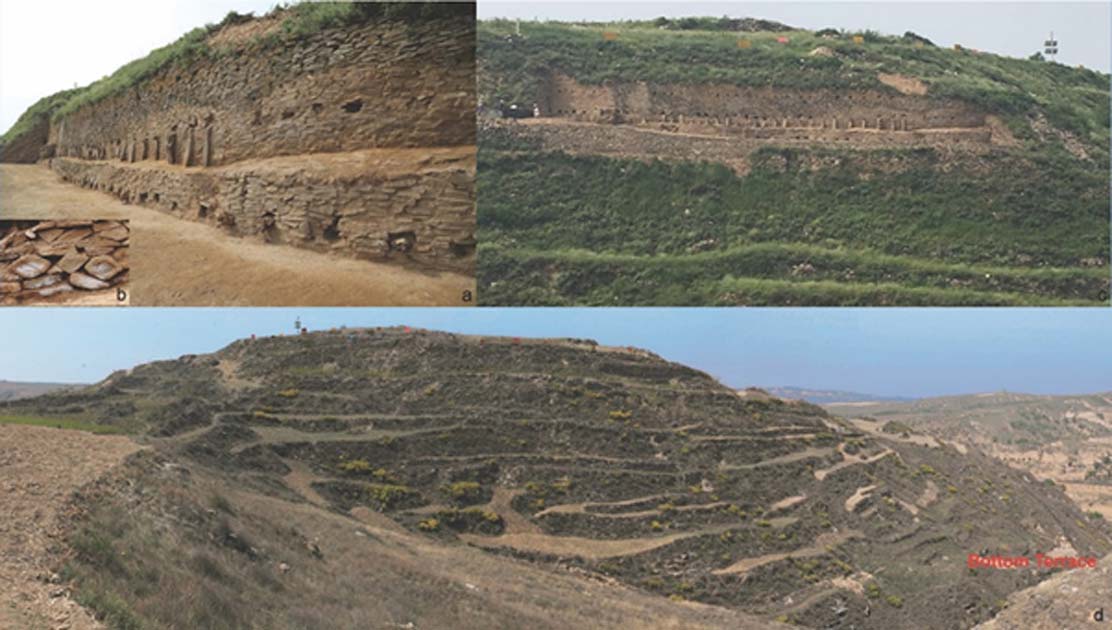A Shift in the Birthplace of Chinese Civilization? Pyramid Structure Emerges in Buried Bronze Age City
A recent discovery at a ruined city in north-west China has amazed archaeologists and other experts. Researchers at the Bronze Age archaeological site of Shimao have identified a large step pyramid. This unusual find is bound to add to our knowledge of early China and throw some light on the mysterious culture that thrived for centuries in the city of Shimao. It is also challenging notions as to when and where Chinese civilization began to develop and where it first emerged.
The Buried City of Shimao
The Shimao ruins are in Shaanxi, China, in the Loess highlands and they date from approximately 4,300 BC, far older than the foundations of the Great Wall. The ruins were not discovered until 1976 and not excavated by archaeologists until 2011. Since then, Shimao has been revealed to be the largest pre-historic ruins in China and is now a protected national monument. It is believed to have flourished for half a millennium and may have been the biggest city in the world at one time.
- Shimao City Ruins: This Massive Prehistoric Site Rewrites Chinese History
- Archaeologists make grisly discovery of 80 skulls in China's largest neolithic city
- 1,400-Year-Old Tomb with Bizarre Images of a Blue Monster Found in China

Loess landscape near Hunyuan, Shaanxi Province, China. (Till Niermann/ CC BY SA 3.0 )
The city extends to about one and a half miles or four kilometers square, and there are still remains of what must once have been impressive defensive walls. Shimao has two walls, an outer and an inner wall and in the center of the ruins is a platform that may have been the residence of a ruler. Many artifacts have been uncovered at Shimao, including jade that had been deliberately placed in the walls, possibly related to some religious ritual. There have been many human skulls found at the site and these are probably the result of human sacrifice. These were found mainly at the eastern gate and were possibly prisoners of war sacrificed during the foundation of Shimao.

One of the pits of skulls unearthed in 2016. Image credit: CNWEST
The Discovery of the Step Pyramid
The discovery of the step pyramid was made by a team of Chinese archaeologists who have been working in Shimao for several. It is reported in LiveScience that the step pyramid structure is “at least 230 feet (70 meters) high and spans 59 acres (24 hectares) at its base.” The structure has 11 broad stone steps. On the highest step, large palaces were built using packed earth and wood. There is evidence of a sophisticated water supply and many artifacts associated with domestic life from the period have been uncovered.
The palace complex on top of the structure was inhabited by the elite. There are extensive bulwarks at the entrance to defend the complex. This would indicate that the pyramid was not a public space but reserved for Shimao’s elite and this indicates that the city was probably a hierarchical society. There is also evidence that artisans and craftspersons worked in the complex on top of the step pyramid.
- Sacrificial altar uncovered in ancient Neolithic city in China
- Why Did Early Human Societies Practice Violent Human Sacrifice?
- Archaeologists Unearth Gruesome Site Where Chinese Emperors Sacrificed Horses

Stone buttresses defend the second and third levels of the step pyramid structure. There are symbols within the stonework. (Image: Zhouyong Sun and Jing Shao/Antiquity)
The pyramid was decorated with symbols that, according to the Journal of Antiquity, “may have endowed the stepped pyramid with special religious power and further strengthened the general visual impression on its large audience.” Among the symbols are an eye-symbol and a figure that is a half-human and half animal. These symbols are very important as they are similar to those at sites on the Central Plains area where Chinese civilization is believed to have first developed. However, Shimao pre-dates these sites and the symbols indicate that it influenced the development of what is regarded by some as the birthplace of civilization in China. The pyramid and its symbols would seem to indicate that the north-west highlands, were critical in the emergence of Chinese civilization.
The significance of the pyramid
The pyramid is an amazing discovery and will help experts to better understand the mysterious society that once inhabited Shimao. This could provide a shift in knowledge for the development of civilization in China. It seems to offer evidence, in the form of the symbols on the stonework making up the step pyramid, that the Central Plains may not be the origin of Chinese culture but there was earlier development here, in the Loess Highlands in the north-west.
Top image: Images of the step pyramid. Source: Zhouyong Sun and Jing Shao/ Antiquity
By Ed Whelan



















